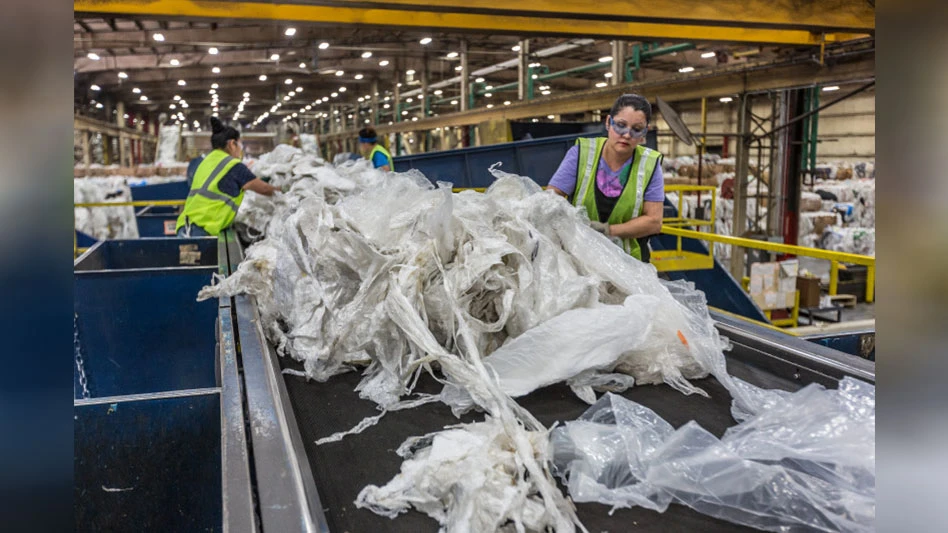 Toward the end of the 19th century, a Russian scientist named Boris Rosing was experimenting with a cathode ray tube (CRT) when he managed to deflect electron beams in a way that displayed simple geometric shapes onto a screen. This was the geniture of the modern television and signaled a major advancement in personal entertainment technology.
Toward the end of the 19th century, a Russian scientist named Boris Rosing was experimenting with a cathode ray tube (CRT) when he managed to deflect electron beams in a way that displayed simple geometric shapes onto a screen. This was the geniture of the modern television and signaled a major advancement in personal entertainment technology.
Television Goes Mainstream
CRTs have been the predominant television display technology for more than a century. In the film Back to the Future, we saw Marty McFly go to the year 1955, where his young mother’s family said it was absurd that he claimed to have more than one television. They remarked, “No one has two televisions.” That’s because less than a decade earlier, the United States was home to fewer than 7,000 working TV sets. By 1960, manufacturers were making 5.7 million TVs per year, but that number doubled before the end of the decade as original equipment manufacturers (OEMs) churned out 11.4 million new TV sets in 1968 alone. Throughout the following decades, TVs became more affordable, programming choices expanded and broadcast news provided additional value beyond simple entertainment. The transition from TVs as a luxury item to a household commodity was realized by 1993 when 98 percent of U.S. households owned at least one TV with 64 percent of them having two or more.
Birth of a Crisis
In the late 1990s, manufacturers began looking into new display technologies for electronics. In 1997, Philips and Pioneer brought the first 42-inch plasma TVs to the public. The televisions retailed for $14,999 and included in-home installation. While the price was hardly a bargain by today’s standards, it was the beginning of the end of CRT devices.
The one question everyone is concerned about today was barely an afterthought during the mid-1900s: “What will happen when these devices reach the end of their usable lives?”
Fast forward to 2013, and that oversight has led to a full-on crisis.
Today, millions and millions of electronics reach end of life each year and are refurbished for reuse or are broken down so that their various components can be recycled. Widespread adoption of electronics recycling regulations is responsible for much of the increase in the recycling of old electronics. To date, 25 states have passed electronics recycling, or e-waste, legislation. In most cases these regulations are extended producer responsibility (EPR) laws, meaning they are based on the philosophy that manufacturers should cover the costs of recycling their old electronics since they were responsible for producing them. With these EPR laws, states place the financial responsibility of collecting, transporting and recycling these devices on the OEMs that released them into the world. The volume of material each OEM is responsible for collecting is calculated differently from state to state, but the quantity is typically derived using a calculation that takes into consideration the OEM’s market share as of the prior calendar year.
However, CRT devices provide a unique recycling challenge because their screens include leaded glass that contains approximately 4 pounds of lead per device. Leaded glass is commonly considered a hazardous, or universal, waste. Accordingly, 19 states have passed landfill disposal bans on CRT devices, making their disposal illegal. With disposal out of the equation, recycling and reuse are the only options for this material. In 2005, California passed the first legislation mandating the environmentally safe and responsible recycling of CRTs and other display devices. By creating a system using an advanced recycling fee, or ARF, the California regulators created a funding system that ensured CRTs used by California residents would be handled in an environmentally compliant manner upon reaching end of life. Since 2005, California has recycled more than 1 billion pounds of CRTs and other display devices.
However, options for recycling CRTs are increasingly scarce. Traditionally, recycling the glass from old CRT devices into new CRTs was the primary solution. This CRT-glass-to-CRT-glass recycling process is the most economically viable as it provides recycled material to manufacturers that reduces their raw materials demands. This approach worked well; as early CRT devices were reaching end of life, newer CRT devices were being produced that could use the reclaimed materials. As these newer devices reached end of life, still newer CRT devices were being produced, and the cycle continued well into the 2000s.
But recently CRT technology has been replaced in the monitor market by liquid crystal displays (LCDs), light-emitting diodes (LEDs) and plasma screens. Electronics using these new compact and energy-efficient technologies are becoming more affordable and widely available. In 2007, sales of LCD televisions surpassed those of CRT-based televisions worldwide for the first time and are today the most widely produced and sold television display type. In 2012, CRT televisions only accounted for less than 7 percent of worldwide TV shipments.
A crisis is officially underway, as processors, dealing with monetary constraints, bang their heads against a wall trying to figure out what to do with the massive amounts of leaded glass and/or CRT devices that are housed within their facilities. In fact, the problem has become so severe that California is even considering temporarily lifting its landfill ban on CRTs, allowing them to be sent to hazardous waste landfills.
Recognizing the dire situation, industry groups also have responded. For instance, the Consumer Electronics Association (CEA) has created the CRT Challenge to encourage the development of new, financially viable, environmentally conscious uses for CRT glass.
While legacy CRTs pour into recycling and processing facilities, recyclers are provided with few options. The effect is compounded by the increasing quantity of CRT devices being recycled, landfill bans, a rapidly dissolving secondary market and lead glass recycling processes being too expensive and cumbersome currently. But there is hope.
An Ideal Solution
Individually, markets are available for commodity grade lead and glass, the two main components of the leaded glass deemed hazardous within CRT devices. Both of these materials have various uses, from electronics to construction, and it’s profitable for companies to use “reclaimed” or “second life” materials, as consumers are willing to pay a premium for products that use recycled material. Reports have shown that consumers in the developed world prefer environmentally sustainable products that require little or no additional materials to be mined from the earth to manufacture.
Essentially, an opportunity exists to satisfy consumer demand for products that have less of an impact on the environment while also responding to the dissolution of the secondary market for CRT electronics. This requires redirecting how end-of-life CRT devices are handled and a significant shift to focus on separating and reclaiming raw materials versus reusing components in a new device. As is typically the case, technologies are being developed in response to this never-before-seen problem and they are focused on this exact approach.
Smelters, or furnaces, for example, exist that can separate leaded glass to make commodity grade lead and glass. The most advanced furnace is modeled on Phoenix-based Closed Loop Refining and Recovery’s (CLRR) technology, which centers on an energy-efficient electrically heated furnace that produces minimal emissions by burning at a temperature that does not volatize the lead. The friendliness of the furnace is key because what would be the point of solving one environmental issue if it simply introduced a new one?
However, as with all new technologies, this process comes at a significant cost, which is why widespread deployment has not occurred.
With no time to spare, as the next generations of furnaces that operate more efficiently are being developed, the current furnace can make business sense if there’s a guaranteed volume of leaded glass that can offset the current operating costs. The needed volume would be significant and much more than any handful of recyclers could provide but absolutely attainable through an existing large national network of recyclers. For example, a large individual recycler’s stream of 1 million pounds of CRT devices might not cover CLRR’s furnace operating cost, whereas a network such as E-World Online’s 40 certified recyclers would surpass the needed volume threshold, as it is capable of producing 60 million pounds of CRT glass per year.
Although the government has no interest in managing this transition, and rightly so, it is in its best interest to support the success of this solution. So that no additional time is wasted, tax incentives or possibly grant money would be helpful to get the ball rolling. What’s even more exciting is that when the new process proves successful, it can be scaled to allow for furnace facilities across the country, further improving efficiency and reducing costs. Although it’s easier said than done, this approach is the industry’s best option considering the technology currently available and would be a true win-win situation for all involved.
Golden Opportunity
Throughout the next few years, industry groups say they expect more than 2 billion pounds of old CRT devices to enter the recycling stream. It’s a global crisis that can be solved, but it takes action. It takes the right collaboration between materials providers, financial investors, technological innovators and government regulators. While the pessimist might see an insurmountable challenge, the optimist sees an opportunity to be a shining example of public-private partnership for the benefit of the entire global community. What’s left to be seen is which organizations and innovators will seize the opportunity and showcase their leadership.
Time is of the essence. The industry needs to act fast before the problem amplifies or a significant public health threat arises. As it has done before, the nation is looking at electronics recycling leaders to step up to the plate and face this problem head on. Let’s hit a home run.
The author is CEO of E-World Online, Vista, Calif. More information on the company is available at www.e-worldonline.com.

Explore the September 2013 Issue
Check out more from this issue and find your next story to read.
Latest from Recycling Today
- Lefort Trax 1375 model on the job in Indiana
- Sennebogen demolition unit gets new leaders
- TerraSafe launches plastic-free products following merger with DisSolves
- University of Richmond wins first place in Campus Race to Zero Waste
- Sonoco achieves Pet Sustainability Coalition accreditation
- Eneos, Mitsubishi Chemical complete chemical recycling facility
- Clean Vision breaks ground on West Virginia pyrolysis facility
- Northeast Recycling LLC buys Mass Green Disposal Services LLC





